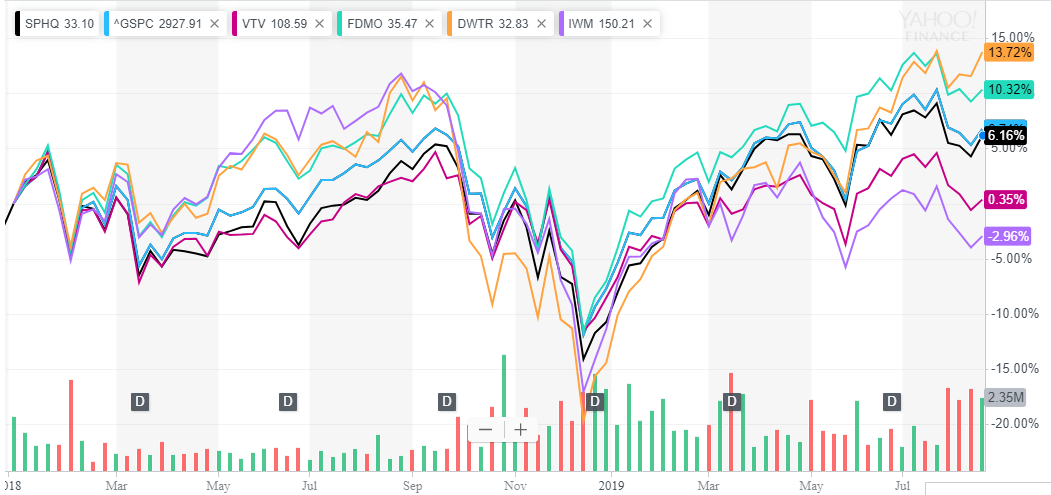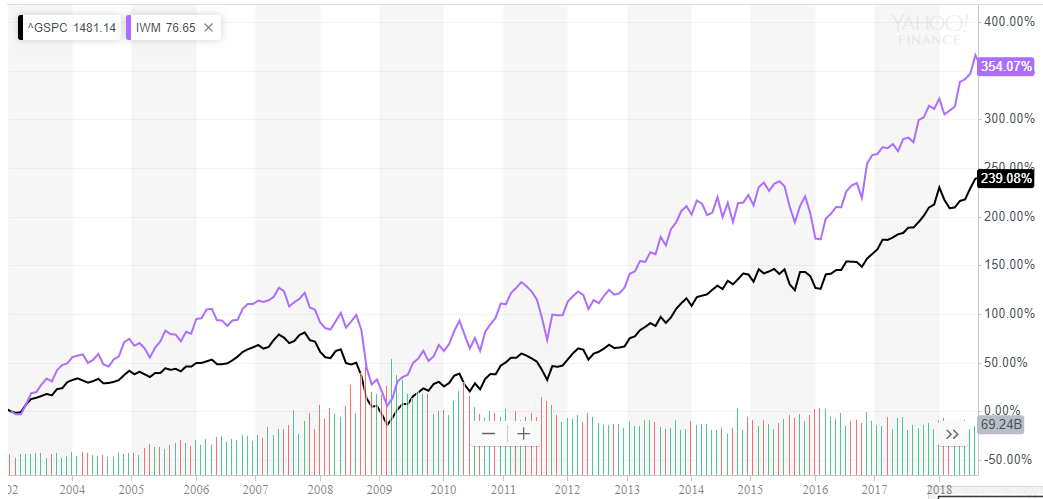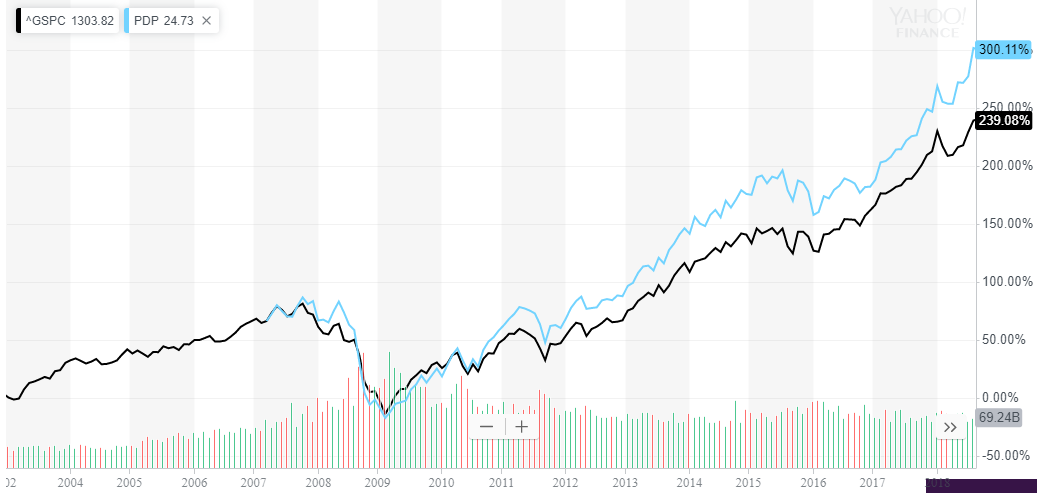The answer is a qualified yes. Qualified by the time frame you're looking at. Today there are more than 100 different factors on offer by the Investment Industrial Complex, most of which are garbage. \
Factor ETFs are a gravy train for those who sell them, because let's face it... there's a sucker born every minute.
In this article I'll look for factor strategies and ETFs that are the real deal.
My research methodology
I looked at five of the most popular factor ETFs and compared their performance to the S&P 500 since the beginning of 2018. I found that just two of the five factor ETFs have outperformed the S&P 500.
Sector Rotation and Momentum (trend following) produced Alpha. Quality just missed by a hair. Value and Size (small caps) lagged the market badly. You can see this by looking at the far right edge of this chart.
Chart 1. Relative performance of popular factor-based ETFs since January, 2018
I chose this short time frame because I think it has more immediate relevance for investors. But at longer time frames these factors have all been successful in beating the S&P 500 (capturing Alpha). This brings me to a key point of this article.
Factor based investing is very time-frame dependent. For example, the Size factor (which favors small companies) has been a big producer of Alpha for decades, but lately small companies have been struggling to keep up with the rest of the market.
Chart 2. Small Caps vs. the Market from 2003 - 2018
This chart shows a very different picture of the relative performance of small companies compared to the broad market. At this time frame small companies outperformed the market by 115%. This period included the stock market meltdown of 2008. Small companies got hit harder than the market that year but they recovered more quickly and regained their previous high ground before the broad market did.
Chart 3. Momentum stocks vs. the Market from 2003 - 2018
Like the Small Company factor, the Momentum factor also beats the market over a longer time frame. This is a trend-following strategy that works very well in trending markets (like our 10 yr bull market for example) but stumbles during choppy and directionless markets.
And it's especially susceptible to bear markets because the ETFs that use Momentum aren't allowed to go short. You can see on the chart below that this strategy got hammered in 2008, but revovered nicely after the storm had passed.
I could show you similar patterns for the other three factors but I think you get the point of this article. Now, here's the big question for investors who want to beat the market.
Given the time frame dependence of factor investing, do you have the discipline to ride out a period of under-performance that might last one or two years? It's easy to think you can, but difficult to execute.
At the bare minimum it requires a well-constructed investment plan, including trading rules and price parameters. It also requires above average intestinal fortitude and unshakable confidence in your plan.
Do you have that? Factor investing is not suitable for weekend warriors, amateurs, or seat-of-the-pants types. But if you have what it takes to execute a factor strategy and follow through, you will undoubtedly be handsomely rewarded for your efforts.



